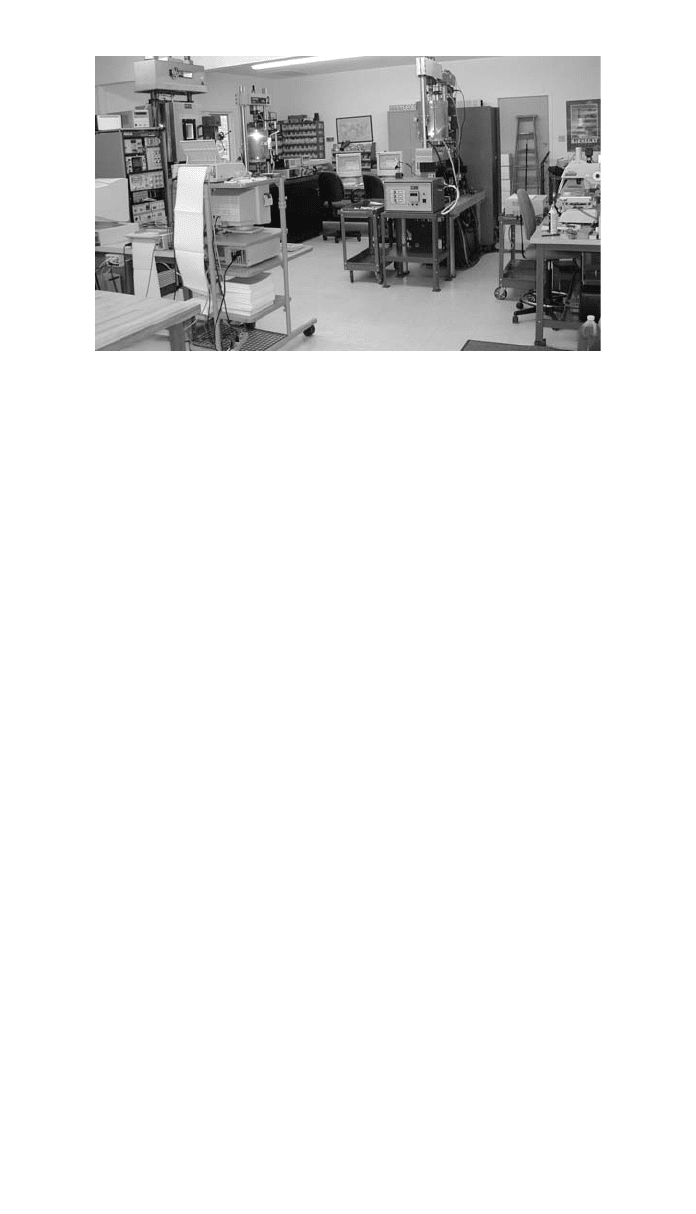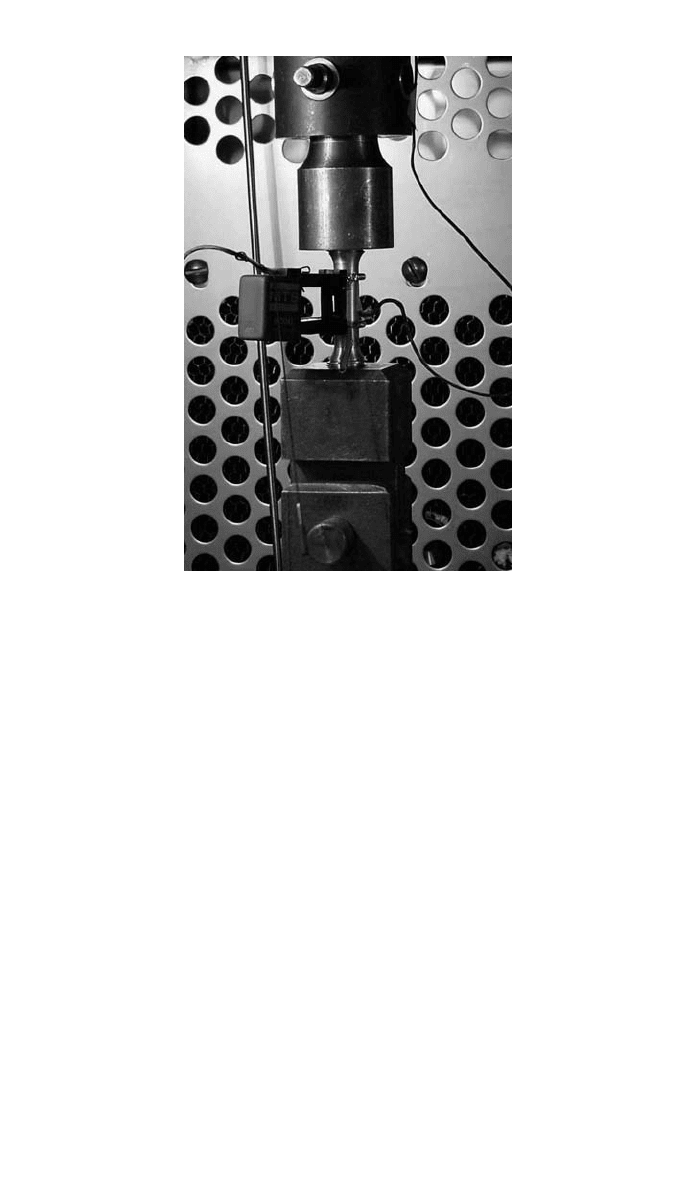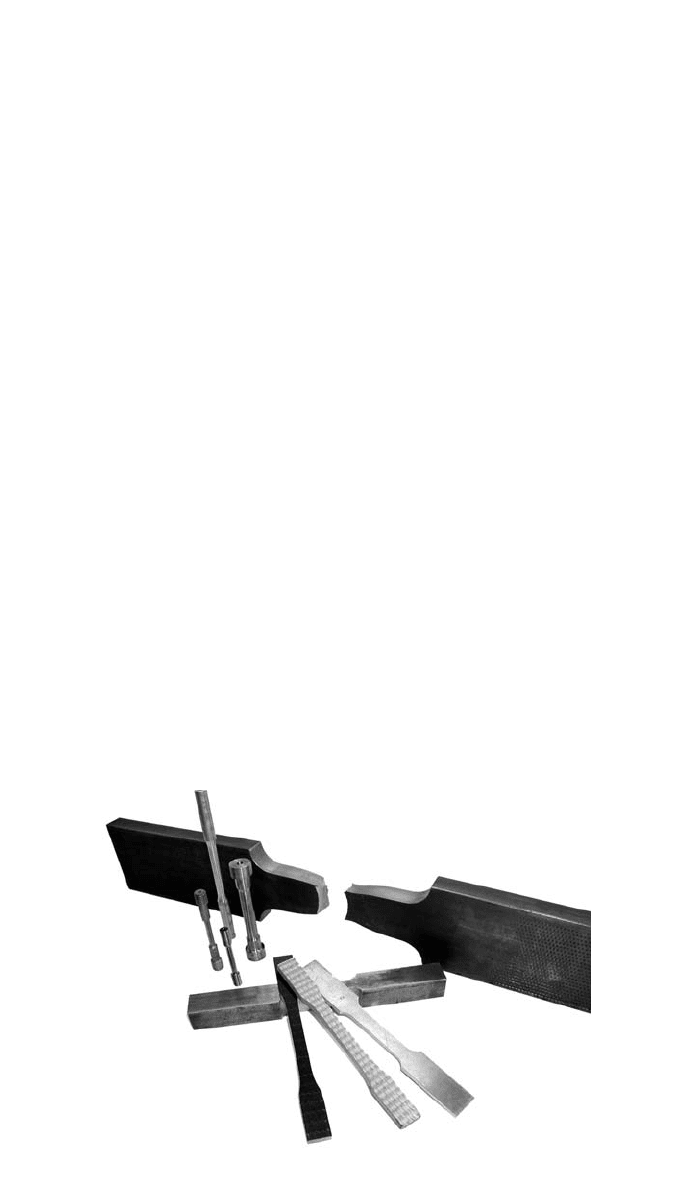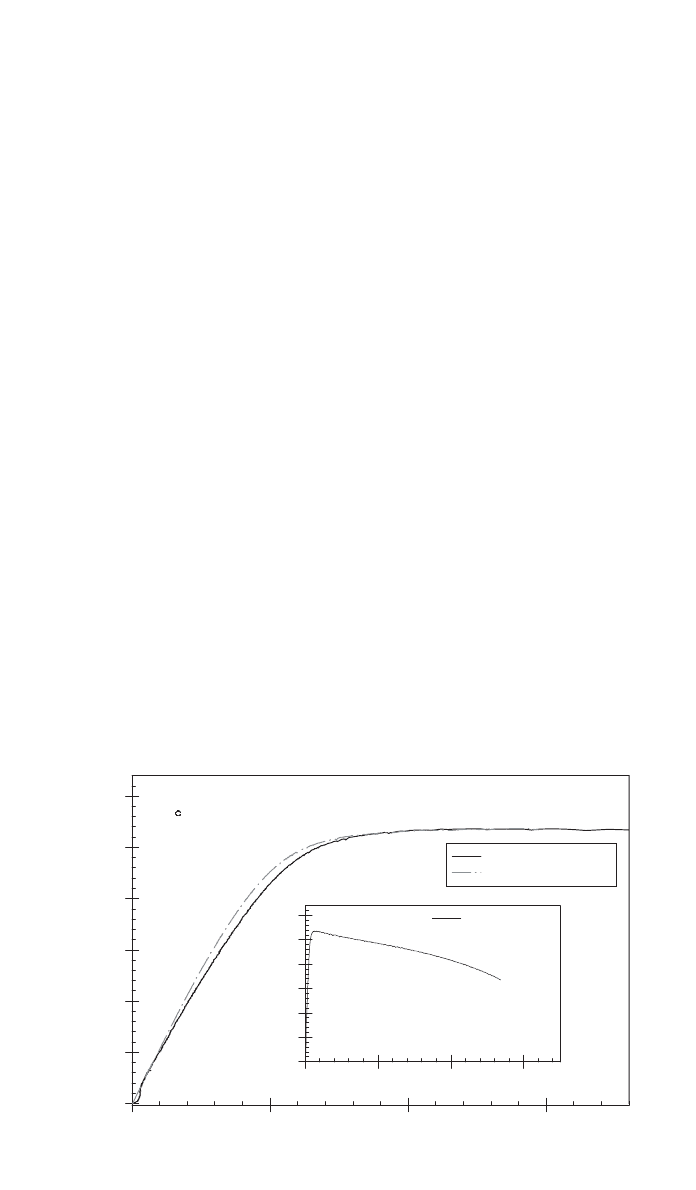Kutz M. Handbook of materials selection
Подождите немного. Документ загружается.


516 INFORMATION FOR MATERIALS PROCUREMENT AND DISPOSAL
5. J. H. Westbrook and K. W. Reynard, ‘‘Sources of Information for Materials Economics, Policy,
and Management,’’ in Concise Encyclopedia of Materials Economics, Policy, and Management,
M. B. Bever, Ed., Pergamon, Oxford, 1993, pp. 35–43.
6. International Forum on Globalization. website: www.ifg.org. The Thoreau Center for Sustain-
ability, 1009 General Kennedy Avenue #2, San Francisco CA 94129; Tel: (415) 561–7650, Fax:
(415) 561–7651.
7. www.cio.com / research / global.
8. www.globalization.com.
9. Electronic Commerce, National Association of Purchasing Managers (NAPM) Resource Guide.
10. Electronic Commerce, Electronic Business, and Collaborative Commerce, NAPM, 2000.
11. Website: www.ecommerce-guide.com.
12. K. Srinivasan, K. Sunder, and T. Mukhopadhyay, ‘‘Impact of Electronic Data Interchange Tech-
nology on JIT Shipments,’’ Management Science, Oct. 1994, pp. 1291–1304.
13. N. Waters-Fuller, ‘‘Just-in-Time Purchasing and Supply: A Review of the Literature,’’ Int. J.
Operations & Production Management, 15(9), 220–236 (1995).
14. R. J. Vokurka and R. A. Davis, ‘‘Just-in-Time: The Evolution of a Philosophy,’’ Production and
Inventory Management J., 37(2), 56–59 (1996).
15. C. A. Swanson and W. M. Lankford, ‘‘JIT Manufacturing,’’ Business Process Management J.,
4(4), 333–341 (1998).

PART 4
TESTING AND INSPECTION
HandbookofMaterialsSelection.EditedbyMyerKutz
Copyright Ó 2002 John Wiley & Sons, Inc., NewYork.

519
CHAPTER 19
TESTING OF METALLIC MATERIALS
Peter C. McKeighan
Southwest Research Institute
San Antonio, Texas
1 MECHANICAL TEST
LABORATORY 520
1.1 Test Machines 520
1.2 Sensors and Instrumentation 522
2 TENSILE AND COMPRESSIVE
PROPERTY TESTING 524
3 CREEP AND STRESS
RELAXATION TESTING 526
4 HARDNESS AND IMPACT
TESTING 528
5 FRACTURE TOUGHNESS
TESTING 531
6 FATIGUE TESTING 535
7 OTHER MECHANICAL
TESTING 540
8 ENVIRONMENTAL
CONSIDERATIONS 540
REFERENCES 543
One of the daunting challenges that face a designer when making a material
selection is knowing what properties are the most critical for a given application.
Assuming that the appropriate properties can be chosen, the designer next needs
to be able to find the properties for each metallic material of interest (a challenge
in itself) and then interpret the values relative to the design requirements. This
requires that the designer have rudimentary knowledge of both the properties
and test methods as well as an understanding of how to interpret the properties
in the design context.
The purpose of this chapter is to provide some of the basic background for
how metallic materials are mechanically tested. The goal is not to provide enor-
mous detail for each different type of property; other sources, for instance Ref.
1, can provide this. Rather, the intent is to provide sufficient basic information
so that the reader understands what the purpose of the mechanical test is, what
mechanical property typically results, and what the corresponding design impli-
cation is.
The complexity of metallic materials testing and the specific technical lan-
guage required can be confounding, especially to engineers not intimately fa-
miliar with the field. Those of us in the field also can confuse each other as new
methods, terminologies, and approaches develop and are adopted. Luckily, there
exists an organization whose mission in part is to minimize this type of mis-
understanding.
HandbookofMaterialsSelection.EditedbyMyerKutz
Copyright Ó 2002 John Wiley & Sons, Inc., NewYork.

520 TESTING OF METALLIC MATERIALS
The American Society for Testing and Materials (ASTM) is one of the world’s
largest standards development organizations with over 34,000 members respon-
sible for more than 10,000 standards. The breadth of these standards is enormous
(74 volumes), covering not only test/evaluation procedures but also standardi-
zation approaches for designating metals, paints, plastics, and the like. Originally
developed in 1898, this independent, not-for-profit organization serves as a fo-
rum for producers, users, consumers, and others in developing voluntary, con-
sensus standards. In practice, a hierarchical committee organization develops the
standards initially with a group of experts providing a draft standard. This draft
is subsequently balloted by ASTM and does not become a standard until all
concerns raised during the voting process have been fully addressed.
The test-related standards that ASTM publishes help to ensure that mechan-
ical properties generated in one laboratory are consistent with those generated
in another laboratory. This consistency is critical from a design point of view
since specific property values are typically extracted from numerous sources,
and knowing that consistent methods were used in generating these properties
is subsequently crucial. The majority of the ASTM standards related to metals
test methods and discussed in this chapter are contained within Ref. 2.
Knowing where to look for the standard does not necessarily imply that it is
easy to know which property is the most germane for a given design. For in-
stance, under the classification ‘‘fracture testing,’’ there are 16 separate standards
in Ref. 2, all very different and evaluating disparate quantities such as crack-tip
opening displacement, plane-strain fracture toughness, surface crack toughness,
dynamic tear properties, and the like. The fundamental characteristics of the
design scenario involved and the candidate metallic materials considered will
dictate which fracture property is suitable. In a case such as this where many
different test methods are available, selection of the appropriate test standard is
complex and beyond the scope of this elementary treatise.
Finally, ASTM also provides other resources to ensure that the properties
required are available. In particular, the Directory of Testing Labs
3
provides a
state-by-state listing of laboratories that are available to perform materials test-
ing. The laboratories are identified by the type of test performed, with an index
cross-referenced to specific test methods. Moreover, a brief synopsis of the lab,
including scope of testing, facilities, and staff, is also provided to allow differ-
entiating between the different available choices.
1 MECHANICAL TEST LABORATORY
During mechanical testing, a component or material is loaded with either dis-
placement or force, causing a deformation and associated mechanical response
to occur. The loading occurs at a design relevant rate (impact, static, or cyclic),
and the test is typically performed in the most suitable environment for the end
use of the component. The two key components in this process that make up
the primary constituents in a mechanical test lab (Fig. 1) are the test machine
required to apply the specified loading as well as the sensors and instrumentation
used to measure the behavior of the test article.
1.1 Test Machines
The test machine, or loading frame, is used to apply stress (or strain) resulting
in axial tension or compression, bending, shear, torsion, or pressure. Although

1 MECHANICAL TEST LABORATORY 521
Fig. 1 Typical material test lab containing numerous servohydraulic test frames.
(Courtesy of Fracture Technology Associates)
a variety of different loading systems are available, the most common is the
universal testing machine, which allows all of these different types of loading
types by use of different test fixtures and load train components. Load is applied
through a hydraulic piston and cylinder (servohydraulic machine) or with pre-
cision machine screws (screw machine) driven by an electric motor and gear
box system. Although screw machines have lower load capacities than servo-
hydraulic systems (generally 125 kips or less), their displacement stability, ac-
curacy, and precision is better than typically observed with servohydraulic
systems. Nevertheless the advantage of the more common servohydraulic sys-
tems is the rapid rate of response necessary for many types of tests (e.g., any
type of cyclic testing, including fatigue and fracture applications).
For the case of servohydraulic machines, the actuators are typically double-
ended allowing tension and compression of the load train. The displacement rate
of these machines range from nearly static to approximately 350–1000 in./s.
The actual highest rate possible for a given machine/specimen combination is
difficult to assess since it depends upon the actuator size, flow rating of the
servovalve, as well as the supply pump, plumbing configuration, and control
system parameters. Servohydraulic test machines range in size but are typically
available from 1 kip to 1000 kips or more.
The control of screw and servohydraulic machines is accomplished through
dedicated microprocessor-based electronics. Controllers generally fall into two
categories: the older generation (but stable and cost effective) analog controller
and the newer digital controller (Fig. 2). In the strictest sense, an analog con-
troller needs a signal source to drive it, typically either a built-in function gen-
erator or an external computer for complex waveforms or more stringent control
requirements. Whereas machine control in this case is with analog electronics,
in the fully digital system closed-loop control is achieved with a computer run-
ning software designed to perform the test of interest. The digital systems are
typically provided with a suite of programs designed to perform a wide variety
of standard test protocols.
A test machine is incomplete without a range of grips and fixtures suitable
for inserting a test specimen into the load train of the frame. Although the

522 TESTING OF METALLIC MATERIALS
Fig. 2 Servohydraulic test frame and digital controller. (Courtesy of MTS Corporation)
majority of the ASTM test standards address fixtures and grips in some manner,
inevitably the hardware available in a given laboratory is diverse and varied,
consisting of both standard and hybrid fixtures whose functionality has been
proven through repeated use. Versatile pneumatically or hydraulically actuated
mechanical clamp grips constitute one of the more popular types available.
1.2 Sensors and Instrumentation
The sensors and instrumentation in a lab are designed to measure mechanical
behavior. Perhaps the most commonly used sensor is the load measuring device,
also called a load cell. Load cells are placed in series with the specimen in the
loading train and can come in a wide variety of sizes and configurations. Nor-
mally, threaded couplings are available on either side of the load cell to attach
fixtures. Inside the load cell is an instrumented transducer, typically using strain
gauge technology to relate applied load to a resistance change suitable for sens-
ing.
Although numerous nontraditional methods and systems exist for measuring
displacement or strain,
4,5
the most common method is based on a sensor that
provides output based upon strain gauge technology. An example of this is the
highly reliable modern material test extensometer (Fig. 3). This device, fastened
to the specimen by mechanical clamping, is used to accurately measure displace-
ment between a pair of short knife edges affixed to the gauge length of the
specimen. Another type of displacement gauge is the clip gauge, which is
basically a spring-loaded extensometer with longer arms. These devices are

1 MECHANICAL TEST LABORATORY 523
Fig. 3 Extensometer (displacement measurement device) mounted on a tensile specimen.
extremely accurate and robust, but they do have environmental limitations to
some extent due to their reliance on strain gauge technology.
Sometimes it is also useful to mount strain gauges directly on the surface of
the test specimen to infer localized behavior. Furthermore, linear variable dif-
ferential transformers (LVDTs) and capacitive coupling-based displacement de-
vices are commercially available for use in the most aggressive environments.
In addition, noncontact optical systems (laser or charge coupled device, CCD,
camera based) can also be used to obtain displacement measurements. Recent
improvements in computer processor speed, CCD camera size, as well as more
affordable random-access memory (RAM) and disk storage makes these vision-
based technology methods more desirable now more than ever before. The pre-
ponderance of optical systems and lack of any standardization in the core
technology has resulted in recent ASTM standards activity and a draft standard
that defines the relevant terminology.
Data acquisition tools have also benefited greatly from the recent advances
in personal computers. Newer data acquisition systems tend to be more flexible
than the older, device-dependent applications. The most popular platform for
application building currently appears to be the LabVIEW (National Instruments,
Austin, TX) programming environment. The LabVIEW platform provides a
graphical, icon-based environment to build and modify applications that are more
device/board independent and well suited to typical complex process, and data
acquisition requirements.

524 TESTING OF METALLIC MATERIALS
Fig. 4 Several sample specimen geometries for tensile testing in accordance with ASTM E8.
(Courtesy of the Instron Corporation)
Some of the most complex tests performed in a mechanical test laboratory
are fatigue and fracture evaluations of metallic components and materials. These
tests usually require highly specialized, custom software to control the test ma-
chine, take the data, and analyze the results. It is always difficult to know a
priori, without extensive experience performing these tests, what data acquisition
parameters are the most critical. For this reason a recent guide, ASTM E1942,
has been developed that assists a user to understand the limitations of instru-
mentation and data acquisition systems, especially as related to cyclic fatigue
and fracture mechanics testing. Furthermore, this standard is also useful for the
segment of the test community not familiar with fatigue and fracture tests, since
it provides a practical guide for understanding data acquisition performance.
2 TENSILE AND COMPRESSIVE PROPERTY TESTING
The tension test, defined for metallic materials in ASTM E8, is perhaps one of
the simplest and most common tests of mechanical behavior. The test is con-
ducted by gripping each end of a reduced section specimen and slowing pulling
it until catastrophic failure occurs. Several sample specimen geometries (round
and flat, threaded and smooth shank), conventionally described as ‘‘dogbone’’
specimens by virtue of their reduced section geometry, are shown in Fig. 4.
Moreover, tension test specimens are sometimes notched in the center of the
gauge length as described in ASTM E338 and E602. These tests are useful for
determining how the given metallic material behaves in the presence of a stress
concentration. Furthermore, results from these tests have also been related to
fracture mechanics parameters for a given material.
In a tensile (or compressive) test, the applied load and displacement (or strain)
in the gauge section is used to develop a plot of the stress–strain behavior using
the specimen geometry and calibration constants of the transducers employed
during the test. One challenge during tensile testing is measuring elongation to

2 TENSILE AND COMPRESSIVE PROPERTY TESTING 525
pipe material
325
F
Strain, in/in
0.000 0.005 0.010 0.015
Stress, ks
i
0
25
50
75
100
125
150
extensometer
strain gage (average)
strain in/in
0.00e+0 1.00e-1 2.00e-1 3.00e-1
Stress, ksi
0
25
50
75
100
125
150
extensometer
Fig. 5 Example stress–strain data from a tensile test from a pipe material tested at 325⬚F.
high strain levels while still having sufficient sensitivity in the elastic region. It
is therefore not uncommon to utilize two strain transducers as shown in Fig. 5.
Special high-gain strain gauges or transducers are typically required to provide
sufficient sensitivity and resolution in the elastic region to derive a Young’s
modulus value. This is contrasted with conventional extensometry, which is usu-
ally used to measure higher levels of strain, even 20% or higher. Alternatively,
two extensometers, one measuring behavior over a small range while the other
configured for a large range, can be mounted on a single specimen. One advan-
tage with this approach is that strain differences as a consequence of different
gauge lengths, due to issues such as strain localization, is greatly reduced since
each extensometer can have the same basic gauge length but be calibrated to
different ranges.
During tensile testing, the ultimate strength is the largest applied stress mea-
sured in the specimen section. The proportional limit, often called the yield
strength, indicates the onset of plasticity where the assumption of linear stress–
strain behavior is violated. Since there are many definitions of proportional limit
(e.g., the conventional 0.2% strain offset method or the API approach
6
using the
stress corresponding to a specific strain level), it is imperative that the physical
meaning of the limit be clearly defined when presenting the results. Moreover,
post-test measurements made on the gauge length and fracture surface of the
specimen are used to quantify the ductility of the specimen. Ductility is the
ability of a material to deform plastically without failure occurring. Ductility
parameters include percent elongation and percent reduction of area.
The mode of failure can also sometimes influence the strain results obtained.
For instance, if the metallic material tested tends to exhibit highly localized
plastic deformation, the region of confined necking results in either higher or
lower effective strain if the gauge length is short or long, respectively. On the
other hand, if deformation is equally distributed along the gauge section, the

526 TESTING OF METALLIC MATERIALS
strain data exhibits no gauge length dependence. Obviously, the potential exists
for misinterpretation when comparing stress–strain behavior from one sized
specimen to another. Therefore, it is important to ensure that specimen size is
constant when performing a relative comparison of properties from one condition
to another or between metallic materials.
Compression testing is typically performed on short cylindrical specimens
(ASTM E9). Care must be taken during testing to minimize the influence of
both buckling and barreling, two modes of behavior that can corrupt compression
test results. Buckling is prevented by minimizing the ratio of specimen length
to diameter (typically in the range of 1–2). Load train alignment is also a critical
feature of these tests. Alignment is often practically achieved by loading the
specimen through a spherical joint so that slight, nearly unmeasurable misalign-
ment will not cause buckling. Barreling results from the friction between the
end faces of the specimen and the loading platens. Friction is minimized by
using lubricant and machining concentric rings on the end of the specimen to
trap the lubricant and keep it from squeezing out.
3 CREEP AND STRESS RELAXATION TESTING
Creep and stress relaxation properties are critically important for high-
temperature applications. Without knowledge of these properties, both air- and
land-based jet turbines, internal combustion engines, and even some electronic
equipment could not be adequately designed. Furthermore, there is always in-
creasing pressure to develop new metallic materials with better performance at
high temperature so that operating temperature in these applications can be in-
creased to yield higher efficiencies.
Creep deformation is examined by applying either a constant load or a con-
stant true stress to a material held at a specified temperature. When the material
is first loaded, a small permanent loading strain occurs and the creep strain rate
gradually decreases. This portion of the creep strain versus time plot is called
primary creep (stage I). This is subsequently followed by secondary (or also
steady-state or stage II) creep with the highest rates observed in the final tertiary
creep (stage III) immediately before failure. These three regions of the creep
curve are shown schematically in Fig. 6. Whereas the test methods are described
in detail in ASTM E139, the primary components of the test include a static
load frame, furnace, and high-temperature extensometry.
The test specimens are similar to those used in a quasi-static tensile test,
although the actual geometry used is often controlled by the metallic material
form available. Static dead-weight machines are typically employed for this type
of test, as shown in Fig. 7. The frames usually have a balance beam to magnify
the load applied to the specimen by a factor of between 2 and 25. All of the
pull-rod and coupling fixtures employed are manufactured from high-
temperature alloys impervious to the environment used during the test. Tubular,
electric resistance furnaces are usually used with the number of zones typically
dependent upon the size of the specimen. Special attention must be made to
ensure minimal thermal gradients and uniform temperatures applied to the spec-
imen.
The measurement of gauge length deformation is typically critical during a
creep experiment. If temperatures are sufficiently low (
⬍400⬚F), conventional
